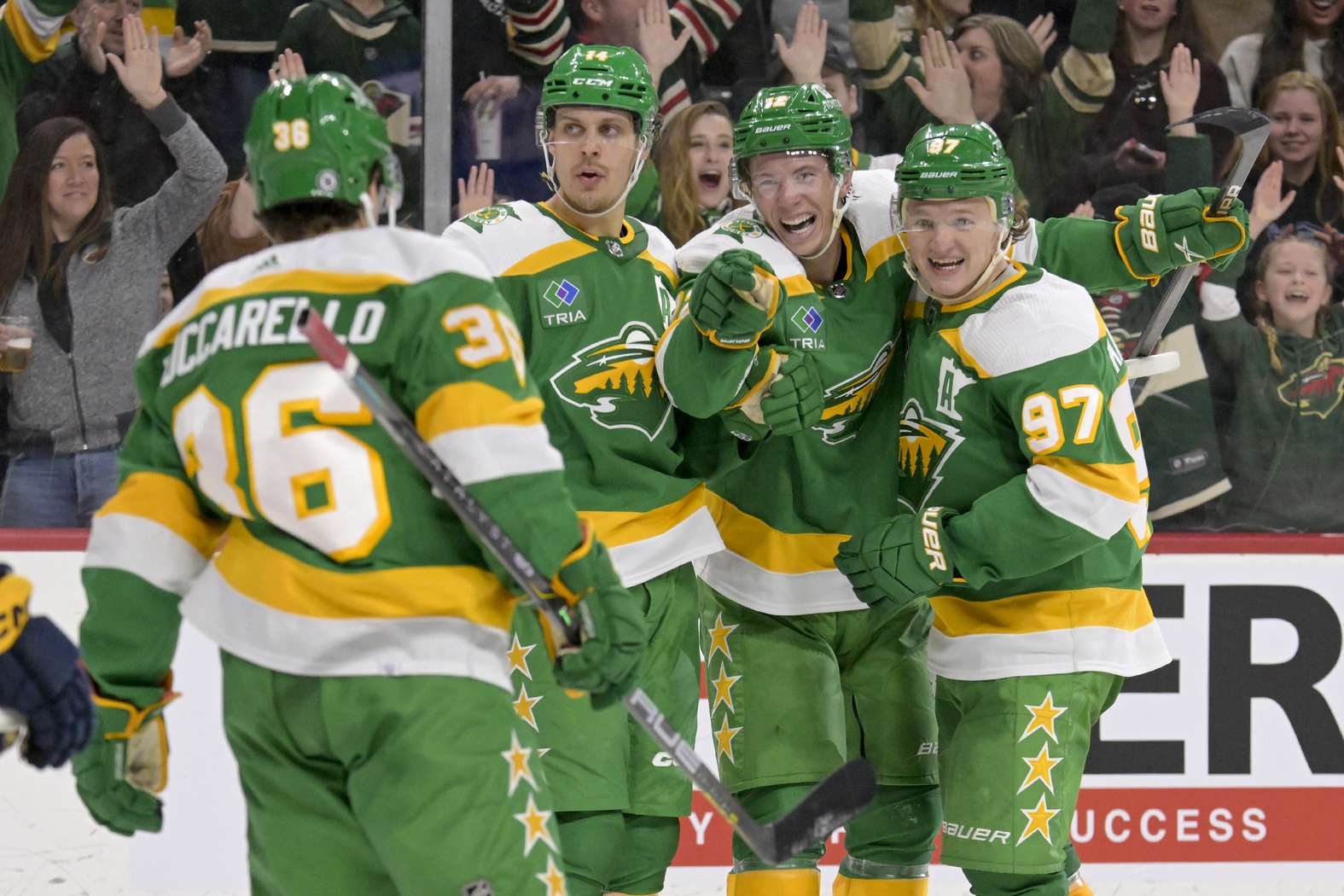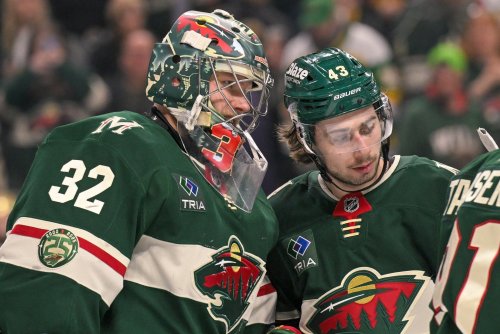
On Friday night, the Colorado Avalanche denied the Minnesota Wild a much-needed point in overtime. Valeri Nichushkin sank the critical goal while the Avs enjoyed a 4-on-3 power play. One has to wonder if John Hynes, whose team is in desperation mode, stewed on the bench and thought If only that were us.
Whether Friday's loss was weighing on Hynes' brain or not, it sure feels like his Hail Mary on Sunday after was a response to that crucial missed point. In a must-win Sunday matinee against the Nashville Predators, Hynes pulled Marc-Andre Fleury from the net. It was a massive risk, but gave the reward of effectively giving his team a 4-on-3 power play.
The move paid off when Matt Boldy ended the game on a cross-ice one-timer from Mats Zuccarello. Thanks to the advantage in the offensive zone, the Wild were able to set up for the play, giving Boldy all the room in the world to hit his spot.
NHL coaches are conservative and risk-averse by nature. Curiously, Hynes was at one point no exception to that trope. It's not a perfect measure, but in his final three full seasons with the New Jersey Devils, he ranked 24th in minutes played with an empty net, according to Natural Stat Trick.
However, once he went to coach Nashville, his Perds team jumped all the way to 10th in the NHL over his three full seasons. Some of that might be because Nashville had more top-tier talent. Therefore, it was more capable of scoring with the extra boost. But it might also be a sign of him evolving with the times. Taking that enormous risk in overtime would line up with the thinking that his appetite for increasing risk to increase reward.
"It's not something that you do all the time," Hynes conceded. "But I think in our position, we wanna be aggressive, we wanna get two points.... One point, no points, it's not gonna do us any good. We gotta get two points."
The closest thing to this gambit in the sports world is the NFL's fourth-down revolution. Like pulling a goalie in overtime, it's an all-or-nothing strategy that can go wrong as easily as it can go right. But analytics tend to be on the side of aggression on fourth down, and there's a lot of support for NHL coaches using this tactic more often.
Teams that opt for a 4-on-3 setup meaningfully increase the likelihood that they'll score a goal. Just for the sake of context, let's look at what NHL teams score on other strengths. At 5-on-5, they've averaged 2.52 goals per hour over the past five seasons, or a goal every 23.8 minutes.
In 2015-16, the NHL reduced the number of players on the ice to 3-on-3 in overtime to increase scoring. The added space works brilliantly to that effect. In the past five years, teams have averaged 6.17 goals per hour at 3-on-3, or a goal every 9.7 minutes.
Not only does that mean that a team will score in a 5-minute 3-on-3 overtime on average. But it also increases scoring almost to the level of teams on the power play. The average 5-on-4 power play gets 7.12 goals per hour -- a goal every 8.4 minutes.
If you're keeping scoring at home, just going from 5-on-5 to a 5-on-4 power play nearly triples the scoring rate of a team. Going to a power play in a 3-on-3 game similarly puts scoring into overdrive.
Across the league (in a sample of over 2700 minutes), 4-on-3 power plays score 14.06 goals per hour (one every 4.3 minutes). That's more than twice the rate of a 3-on-3 team's scoring and almost exactly double that of a standard 5-on-4 power play.
How big of an advantage is that? Pick either a 5-on-4 power play or a 3-on-3 team. The gap between the number of goals either of those teams scores per hour and the scoring rate of a 4-on-3 team is larger than the gap between a 4-on-3 team and a 5-on-3 team (19.14 goals per hour). It's monumental.
Granted, the risk it carries might be too much to stomach for teams who aren't as desperate for that extra point. Having the puck sail back into your empty net costs you the second point for a win and the initial point your team banked by going into overtime.
But that's not enough to deter one of the greatest players to ever take the ice. NHL Hall of Famer and Columbus Blue Jackets legend Sergei Fedorov coaches CSKA Moscow, Kirill Kaprizov's former KHL team. He's pulled his goalie in overtime, with the same risky rules that exist in the NHL, multiple times to his teams' benefit.
Hynes's use of that strategy today gives it some proof of concept for today's coaches to take notice of. Maybe it's a Break Glass In Case of Emergency type of thing, but there have to have been teams that could have used this strategy between today and October 28, 2017, the last time pulling a goalie in overtime affected the outcome of a game.
As for the Wild's perspective, Hynes took a big, aggressive swing that was innovative and had data on his side. If that's indicative of the kind of decision-making he brings to the table, Minnesota may be in good hands for the long haul.
All data via Evolving-Hockey unless otherwise stated.
Think you could write a story like this? Hockey Wilderness wants you to develop your voice, find an audience, and we'll pay you to do it. Just fill out this form.
-
 4
4








Recommended Comments
Join the conversation
You can post now and register later. If you have an account, sign in now to post with your account.
Note: Your post will require moderator approval before it will be visible.